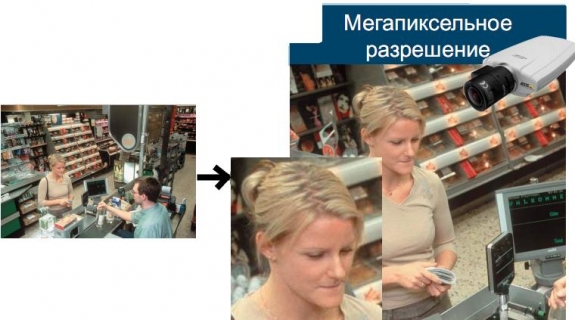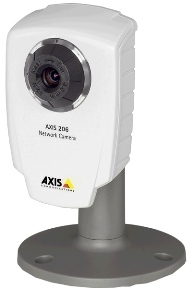10 most important advantages of network IP cameras over analog cameras. Part 2.
The main problem with analog CCTV cameras is that they are tied to television standards and the maximum image size that they can output to the monitor is 704×576 (PAL) — and this is the limit!
And what is most important is that this parameter is in no way connected with the resolution of CCTV cameras, which is written in its passport and is indicated in TVL — 704×576 is the size of the image coming to the monitor, and TVL will only determine the quality of this image.
And if the object of surveillance is not a casino or some important industrial facility, then this resolution may in principle be sufficient, but there must still be a video surveillance archive, and, as a rule, the image is written there reduced (for various reasons — saving space on the hard drive or the video recorder does not allow recording at full resolution), which means that when viewing the archive, you will not be able to get even the quality that you see in the picture from the camera in real time.
And even more so, if you want to zoom in on the image to examine an object in more detail — there is a high probability that you will only be able to examine a «mosaic» of pixels.

What does IPvideo surveillancebring?
Firstly, there are no bindings to video signal transmission standards, which means that there are no restrictions on frame size.
Secondly, the resolution of most IP cameras is 640×480 pixels, which is slightly less than the size of a standard frame in CCTV systems, but this resolution will be written to the archive, and not some reduced one, thanks to which it will be possible to apply digital zoom to the image from the archive without loss of quality.
Thirdly, cameras with megapixel resolution and HDTV video transmission.
A resolution of 1.3 megapixels already gives us a picture of 1280×1024 pixels, which is already twice as large as that of analog cameras (we will discuss the advantages of this a little later).
But this resolution is not the limit — today the market offers IP cameras that transmit images in HDTV 1080p/i (1920×1080) format, as well as network cameras with a resolution of 3 megapixels (2048×1536) and more.
Megapixel resolution of IP cameras gives us three significant advantages:
1) Digital zoom of an archived image without loss of quality. In analog CCTV cameras, this is simply physically unavailable — the image can be zoomed in, but its quality will suffer.
If you zoom in on an image received from a megapixel IP camera, then up to a certain limit you will receive an enlarged image without loss of quality.

2) Digital Pan Tilt Zoom Function. What is this function and how does it relate to megapixel IP cameras.
Pan Tilt Zoom (PTZ) is a term applied to controlled rotating surveillance cameras — by panning and tilting we can view different areas of the protected area, and by zooming we can zoom in (using optics) on the image for a more detailed view.
Megapixel IP cameras can use digital PTZ. For example, a megapixel camera has a wide-angle lens to cover as much space in front of the camera as possible, but we do not necessarily need to get the entire picture at once, we zoom in on some part of it that is of greatest interest to us (for example, a suspicious person) and can observe this object in detail with high definition (no loss of quality with digital zoom due to the megapixel image).
And when we move it, we can also move the selected image behind it (roughly speaking, shoot from the megapixel matrix only that part of the image that interests us), thereby we will “emulate” a rotating camera with the PTZ function.
3) Thanks to the digital PTZ function, one megapixel IP camera can replace up to 4 analog CCTV cameras.
Again, we will need a wide-angle lens for the megapixel camera, after which in the special camera software (for Axis IP cameras) we can select up to four zones of interest to us with the necessary magnification and as a result, the image will be displayed in the archive and on the monitor screen, as if we had four separate cameras installed.

Author: Dmitry Morozov, Personal and Business Security
